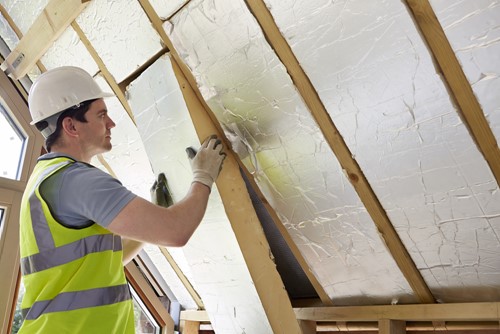
Photo by SpeedKingz via Shutterstock
Living green is the goal of many young homebuyers. Once in their new home, they want to take steps toward improving their home’s efficiency. The first step to improving your home’s energy efficiency is to choose the right house.
Solar panels and LED light fixtures aside, the most efficient form of housing is an attached home. When your house nestles between the walls of adjoining homes, you share their heating and cooling through ambient temperature exchange. When a home sits above another home, their heat rises in the winter to warm that home. If it’s below another home, it’s cooled by the temperature set by the neighbor above. When energy efficiency remains a high priority for your home location, choose a condominium, townhome or duplex to improve your heating and cooling properties.
Improving an Existing Home
If you own a typical single-family, detached home, you’ll find a lot of wasted space being heated and cooled. But address these areas, and you’ll see a marked improvement in your energy consumption and costs:
- Pile on the insulation. Many homes have expansive attics with high roofs above the ceiling joists. The deeper the insulation, the more your winter warmth stays in your home to keep you cozy. But along with adding insulation to your attic, improve its airflow so that summer heat escapes to the outdoors, helping your cooled air circulate.
- Smarten up the windows. Older homes often have single-paned windows, and even those with double panes leak or have broken seals. Replace windows with thermal dual or triple-paned options to see an immediate improvement to those drafty winters and summers where you’re forced to keep the blinds closed. Along with thermal panes, look for smart windows. Buy windows coated with a substance called vanadium oxide (VO2) that adjusts to the temperature to either reflect or let pass infrared light to keep your home warmer or cooler.
- Monitor your HVAC with a smart thermostat. Smart thermostats adjust your home’s temperature based on learning when you’re at home and when you’re away. Some can also detect the humidity and adjust the temperature to compensate.
- Install automatic blinds. Adjustable powered window coverings open and close automatically throughout the day to offset outdoor temperatures.
Try These Simple Things Today
While they won’t make a drastic different, you will see an improvement in your energy bills.
- Change incandescent bulbs for LEDs throughout the home.
- Turn the thermostat up two or three degrees in the summer and down two or three degrees in the winter.
- Lower your water heater to 120°F.
If your goal is to purchase an energy-efficient home, let your real estate agent know. That way, you won’t waste energy looking at ones that don’t fit your desire to leave a lighter footprint.